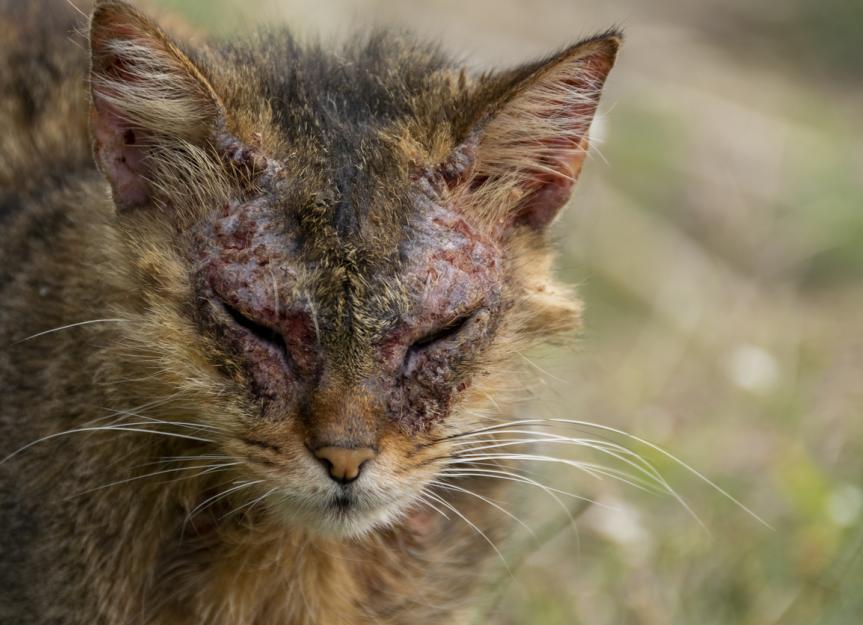
Scabies in cats: causes and treatment
Types of scabies and its pathogens
Scabies in cats is caused by small parasites – tiny mites that are not visible to the naked eye. Infection occurs by contact. There are four main types of feline scabies.
- Otodectosis. Caused by the ear mite, or Otodectes cynotis. The microscopic mite affects mainly the external auditory canal and causes severe itching in the ears. Most often, kittens and young cats become infected through contact with a sick animal – another cat, dog or ferret.
- Demodicosis. One of the rarest types of scabies. It is caused by two parasites, Demodex gatoi and Demodex cati. Skin lesions can be both local and extensive, when a large surface of the skin is affected. Symptoms include intense itching and patchy areas of hair loss.
- Cheyletiellosis. Cheyletiella yasguri is a microscopic mite that infects the superficial layers of the skin. Diagnosed in the laboratory, but on the cat’s skin you can see scales that resemble dandruff. Infection occurs by contact.
- Notoedrosis. The most common and studied type of feline scabies: it is notoedrosis that is the classic diagnosis. These mites live not only on the skin of the animal, but also in the environment, so infection can occur without contact with a sick cat. Scabies mite in cats is an unpleasant and contagious disease.
Treatment of the disease
Before starting treatment, a veterinarian will conduct a comprehensive diagnosis. He will examine the animal to identify the scales characteristic of scabies, dandruff, focal skin lesions, dirt in the ears. Additionally, the cat will be prescribed blood tests, feces and scrapings from the affected skin. Additional research may also be required.
The veterinarian will recommend methods of treatment based on the severity of the disease and the age of the cat. The specialist may prescribe conservative medication, such as tablets, shampoo or drops on the withers. The drops are applied in such a way that the cat cannot reach the treated area and lick off the preparation.
As a preventive measure, you should regularly undergo examinations in the clinic and carry out antiparasitic treatment not only in the summer. It is recommended to avoid contact with street animals and sick cats. If the pet was taken from a shelter, it is worth keeping it in quarantine until all activities related to vaccination and treatment for parasites have been carried out.
Cat scabies can be contagious to some extent for humans – for example, an allergy to tick excrement can manifest itself. However, mites cannot reproduce on human skin.
See also:
- Why does my cat scratch all the time
- What can you get from a cat
- Helminthiasis in cats: symptoms and treatment





